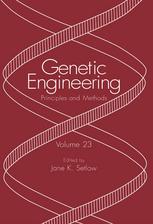

Most ebook files are in PDF format, so you can easily read them using various software such as Foxit Reader or directly on the Google Chrome browser.
Some ebook files are released by publishers in other formats such as .awz, .mobi, .epub, .fb2, etc. You may need to install specific software to read these formats on mobile/PC, such as Calibre.
Please read the tutorial at this link: https://ebookbell.com/faq
We offer FREE conversion to the popular formats you request; however, this may take some time. Therefore, right after payment, please email us, and we will try to provide the service as quickly as possible.
For some exceptional file formats or broken links (if any), please refrain from opening any disputes. Instead, email us first, and we will try to assist within a maximum of 6 hours.
EbookBell Team

4.8
54 reviewsOver the past decade, our laboratory and others have been concerned with molecular archaeological studies aimed at revealing the origins and evolutionary histories of permeases (1). These studies have revealed that several different families, defined on the basis of sequence similarities, arose independently of each other, at different times in evolutionary history, following different routes. When complete microbial genomes first became available for analysis, we adapted p- existing software and designed new programs that allowed us quickly to identify probable transmembrane proteins, estimate their topologies and determine the likelihood that they function in transport (2). This work allowed us to expand previously-recognized families and to identify dozens of new families. All of this work then led us to attempt to design a rational but comprehensive classification system that would be applicable to the complete complement of transport systems found in all living organisms (3). The classification system that we have devised is based primarily on mode of transport and energy coupling mechanism, secondarily on molecular phylogeny, and lastly on the substrate specificities of the individual permeases (4).